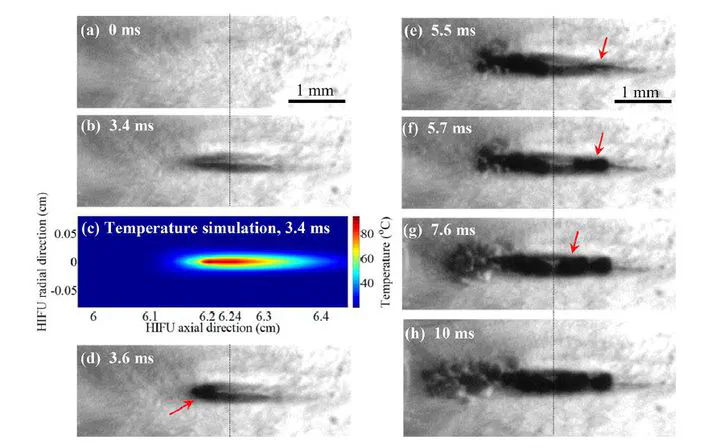Numerical and experimental study of mechanisms involved in boiling histotripsy
Nov 17, 2017·
,
,
 ,
,
,
,
Ki Joo Pahk
Pierre Gélat
David Sinden
Dipok Kumar Dhar
Nader Saffari

Abstract
The aim of boiling histotripsy is to mechanically fractionate tissue as an alternative to thermal ablation for therapeutic applications. In general, the shape of a lesion produced by boiling histotripsy is tadpole like, consisting of a head and a tail. Although many studies have demonstrated the efficacy of boiling histotripsy for fractionating solid tumors, the exact mechanisms underpinning this phenomenon are not yet well understood, particularly the interaction of a boiling vapor bubble with incoming incident shockwaves. To investigate the mechanisms involved in boiling histotripsy, a high-speed camera with a passive cavitation detection system was used to observe the dynamics of bubbles produced in optically transparent tissue-mimicking gel phantoms exposed to the field of a 2.0-MHz high-intensity focused ultrasound (HIFU) transducer. We observed that boiling bubbles were generated in a localized heated region and cavitation clouds were subsequently induced ahead of the expanding bubble. This process was repeated with HIFU pulses and eventually resulted in a tadpole-shaped lesion. A simplified numerical model describing the scattering of the incident ultrasound wave by a vapor bubble was developed to help interpret the experimental observations. Together with the numerical results, these observations suggest that the overall size of a lesion induced by boiling histotripsy is dependent on the sizes of (i) the heated region at the HIFU focus and (ii) the backscattered acoustic field by the original vapor bubble.
Type
Publication
Ultrasound in Medicine & Biology